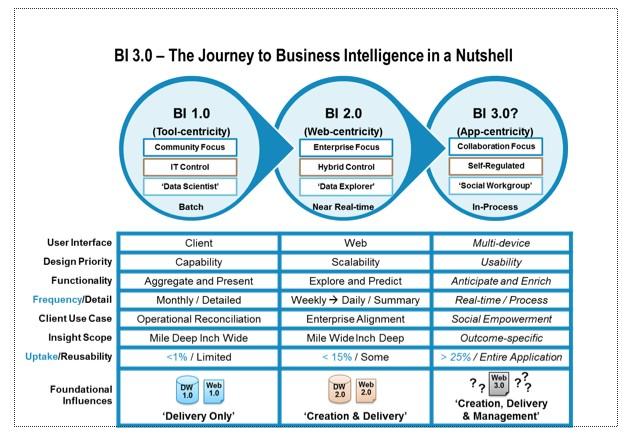Determining Fault in a Car Accident: A Comprehensive Guide
Following a car accident, assigning fault is paramount in determining legal liability and insurance coverage. Understanding the factors that play a role in establishing fault can help individuals navigate the complexities of car accident claims.
When a car accident occurs, it’s essential to determine who is legally responsible for causing the crash. This determination is crucial in assigning liability and determining insurance coverage. Various factors come into play when determining fault, including traffic laws, driver behavior, and evidence from the accident scene.
Establishing fault in a car accident can be a complex process, involving multiple factors and legal considerations. Attorneys and insurance adjusters often rely on police reports, witness statements, and physical evidence to determine fault. In some cases, they may also consult with accident reconstruction experts to determine the sequence of events and assign liability.
Factors Determining Fault
A myriad of factors influence the determination of fault in a car accident, each adding a piece to the puzzle. These factors encompass traffic regulations, driver conduct, and physical evidence from the crash site.
When determining fault, authorities scrutinize the actions of each driver involved in the accident, evaluating whether they violated any traffic laws. For instance, drivers who run red lights, fail to yield, or exceed speed limits may face increased liability for the accident.
Apart from traffic violations, driver behavior also comes under the microscope. Distracted driving, such as texting or talking on a cell phone, can significantly impact fault determination. Driving under the influence of alcohol or drugs can further exacerbate a driver’s liability.
Physical evidence from the accident scene provides valuable insights into fault determination. This evidence includes skid marks, debris, and vehicle damage. By analyzing this evidence, authorities can reconstruct the events leading up to the accident and determine which driver’s actions contributed to the crash.
Determining fault in a car accident is like piecing together a intricate puzzle. By carefully examining the factors that contributed to the crash, authorities can assign liability and ensure that justice is served.
Who Determines Fault in a Car Accident?
When two or more vehicles collide, the question of who’s at fault is often the key to determining who’s liable for damages and injuries. But how is fault determined after a car accident? It’s not always as straightforward as it seems.
Factors Considered
Several factors come into play when determining fault in a car accident. These include:
Negligence
Negligence is the failure to exercise the care that a reasonable person would in the same situation. In the context of car accidents, negligence can include things like:
- Driving while intoxicated
- Speeding
- Failing to yield the right of way
- Driving while distracted
Comparative Fault
In some states, the concept of comparative fault applies. This means that both drivers can be found partially at fault for the accident. For example, one driver may be found 70% at fault while the other is found 30% at fault. In such cases, the damages awarded to each driver will be reduced by their percentage of fault.
Contributory Negligence
Contributory negligence is a legal defense, often invoked by a defendant who has been sued for causing an accident. It alleges that the plaintiff’s own negligence contributed to their injury or damage. In some states, contributory negligence can completely bar the plaintiff from recovering damages.
Strict Liability
In some cases, fault may not need to be established to hold a driver liable for damages. This is known as strict liability. One example of strict liability is when a driver is held liable for damages caused by a defective vehicle, even if they were not negligent in operating the vehicle.
Comparative vs. Contributory Negligence
Comparative negligence and contributory negligence are two different legal doctrines that govern how fault is determined in car accident cases. Comparative negligence allows both drivers to be found partially at fault for the accident, while contributory negligence bars a plaintiff from recovering damages if they were even slightly at fault.
Here’s a simple analogy to help understand the difference: Imagine two drivers driving down the road. Driver A is speeding and runs a red light, while Driver B is driving within the speed limit and has the right of way. In a comparative negligence state, both drivers would be found partially at fault for the accident, even though Driver A was more negligent. In a contributory negligence state, Driver B would be barred from recovering any damages because their own negligence contributed to the accident.
Who Determines Fault in Car Accidents?
If you’ve ever been involved in a car accident, you know it can be a confusing and stressful time. One of the most important things to figure out is who is at fault. This will determine who is responsible for paying for damages and injuries.
Negligence
In most cases, fault is determined based on negligence. Negligence is the failure to exercise reasonable care. This means that if a driver does something that a reasonable person would not do, and that action causes an accident, the driver may be found negligent. There are three elements of negligence: a breach of duty, causation, and damages.
A breach of duty occurs when a driver fails to act as a reasonable person would in the same situation. For example, if a driver runs a red light, they have breached their duty to other drivers and pedestrians.
Causation means that the driver’s actions caused the accident. In other words, the accident would not have happened if the driver had not been negligent. For example, if a driver runs a red light and causes a collision with another car, the driver’s negligence caused the accident.
Damages are the injuries or losses that result from the accident. These can include property damage, medical expenses, and lost wages. If a driver is found negligent, they may be held liable for the damages caused by the accident.
In some cases, more than one driver may be found at fault for an accident. This is known as comparative negligence. Under comparative negligence, each driver is responsible for the percentage of the accident that they caused. For example, if one driver is found to be 70% at fault and the other driver is found to be 30% at fault, the 70% at-fault driver will be responsible for 70% of the damages.
Other Factors
In addition to negligence, other factors can also be considered when determining fault in a car accident. These include:
- Traffic laws
- Road conditions
- Weather conditions
- Witness statements
- Police reports
These factors can help to determine who was at fault for the accident and who is liable for the damages.
Who Determines Fault in a Car Accident?
When two or more vehicles collide, determining who’s at fault is crucial for divvying up liability and determining insurance coverage. Figuring out who bears the blame for a car accident can be a complex task, often involving multiple factors and legal considerations. So, who ultimately decides who’s at fault in a car accident?
Police Reports and Insurance Adjusters
In most cases, the police will respond to the scene of the accident and file an official report. This report typically includes the officers’ observations, witness statements, and their assessment of who caused the accident. While police reports are valuable pieces of evidence, they’re not the final word on fault.
Insurance companies also play a significant role in determining fault. They investigate the accident, gather evidence, and interview witnesses. Based on their findings, they assign a percentage of fault to each driver involved.
Civil Litigation
If the parties involved in the accident disagree with the police report or the insurance company’s findings, they may choose to file a civil lawsuit. In this case, a judge or jury will hear the case and decide who’s at fault. This process can be lengthy and expensive, but it offers an opportunity for both sides to present their evidence and arguments.
Comparative Fault
Comparative Fault
Comparative fault laws exist in many states, allowing judges or juries to assign a percentage of fault to each party involved in an accident. This is done by weighing the contributing factors to the accident, such as reckless driving, failing to yield, or speeding. The percentage of fault assigned to each party directly affects the amount of damages they can recover.
For instance, if a jury finds that one driver was 60% at fault and the other driver was 40% at fault, the driver who was 60% at fault could only recover 40% of their damages. This is because their own negligence contributed to the accident and reduced their ability to recover compensation.
Other Factors
In addition to the factors mentioned above, several other considerations can impact the determination of fault, including:
- Witness statements
- Photographic evidence
- Traffic camera footage
- Medical records
- Expert testimony
Determining fault in a car accident can be a complex and challenging task, but it’s essential for ensuring that justice is served and that the victims of an accident are fairly compensated. By understanding the various factors that can affect the determination of fault, you can better protect your rights and advocate for yourself in the aftermath of an accident.
Who Determines Fault in Car Accidents?
Determining fault in a car accident is crucial for assigning liability and ensuring fair compensation for damages. But who has the authority to make this determination? When it comes to car accidents, the question of "who determines fault" can be a complex one, with a range of factors and parties involved.
Police Reports
In many cases, police officers are the first to arrive at the scene of an accident and will typically file a report documenting the details of the incident. While police reports can provide valuable information about what happened, they are not always conclusive in determining fault. Officers may not have witnessed the accident firsthand and must rely on the accounts of those involved, which can be subjective and unreliable.
Insurance Companies
Insurance companies play a significant role in determining fault in car accidents. They will investigate the incident, collect evidence, and assign a percentage of fault to each driver involved. This determination is based on factors such as witness statements, police reports, and the specific circumstances of the accident. However, insurance companies are not impartial third parties and may prioritize their own financial interests over fairness.
Courts
If the parties involved in a car accident cannot agree on fault or the insurance companies cannot reach a settlement, the matter may be taken to court. A judge or jury will review all the available evidence and determine which driver is responsible for the accident. Court proceedings can be lengthy and costly, but they also provide an opportunity for a more thorough examination of the facts and a legally binding determination of fault.
Comparative Negligence
In some jurisdictions, the concept of comparative negligence is applied in car accident cases. This means that both drivers involved may be found partially at fault, and the damages awarded will be reduced accordingly. For example, if one driver is found to be 70% at fault and the other 30% at fault, the first driver would be responsible for 70% of the damages. Comparative negligence rules can help ensure a more equitable distribution of liability in cases where both drivers contributed to the accident.
Strict Liability
In certain limited circumstances, a party may be held liable for an accident even without proof of negligence. This is known as strict liability and is typically applied to manufacturers of defective products or owners who fail to maintain their vehicles properly. For instance, a car manufacturer may be held liable for an accident caused by a faulty brake system, even if the driver was not negligent in using the vehicle.
Conclusion
Determining fault in car accidents is a complex process that can involve law enforcement, insurance companies, courts, and various legal principles. While police reports, insurance investigations, and court proceedings all contribute to the determination of fault, it is ultimately up to the parties involved or a legal authority to decide who bears the responsibility for the accident. Understanding the different factors and processes involved can help individuals involved in car accidents navigate the legal landscape and seek appropriate compensation for their damages.
Who Determines Fault in a Car Accident?
Determining fault in a car accident is crucial for assigning liability and ensuring fair compensation for damages. In most cases, the police or insurance companies handle this responsibility, utilizing evidence, witness statements, and traffic laws to establish who caused or contributed to the crash.
Insurance
Insurance companies are involved in the majority of car accident claims. They gather evidence, interview witnesses, and analyze police reports to determine fault. This process involves assigning a percentage of fault to each involved driver, which affects the amount of compensation they receive. Insurance companies rely on the following factors to determine fault:
- Police Reports: Official documentation of the accident, including witness statements, damage assessments, and the investigating officer’s opinion.
- Witness Statements: Accounts from individuals who witnessed the accident, providing varying perspectives and corroborating or contradicting driver statements.
- Damage Assessment: Detailed estimates of the damage to vehicles, including the extent and location, which can indicate the direction of impact and point to the at-fault driver.
- Driver Statements: Statements provided by the involved drivers, who often have conflicting accounts of events. However, insurance adjusters scrutinize these statements for consistency and plausibility.
- Traffic Laws: Citations issued by the police for traffic violations that contributed to the accident, such as speeding, running a red light, or driving under the influence.
- Reconstruction Experts: In complex cases, insurance companies may engage expert witnesses, such as accident reconstructionists, to recreate the events leading to the accident and determine fault based on scientific analysis.
Who Determines Fault in a Car Accident?
When two or more vehicles collide, determining who’s at fault can be a complex and contentious issue. In the United States, each state has its own laws and procedures for assigning fault in car accidents. However, there are some general principles that apply in most cases.
In a nutshell, fault in a car accident is typically determined by the driver’s actions that led to the crash. This can include things like speeding, running a red light, or failing to yield. In some cases, multiple drivers may share fault for an accident. For instance, if one driver is speeding and the other driver is driving while intoxicated, both drivers may be held liable for the crash.
Legal Process
If the parties involved in a car accident cannot reach a settlement on their own, they may need to file a lawsuit to resolve the issue and determine fault. The legal process can be complex and time-consuming, so it’s important to seek the advice of an attorney if you’re considering filing a lawsuit.
In a lawsuit, the plaintiff (the person who is suing) will need to prove that the defendant (the person being sued) was negligent and that their negligence caused the accident. The plaintiff will also need to prove the extent of their damages, such as medical expenses, lost wages, and pain and suffering.
The defendant may have several defenses to a negligence lawsuit. For example, the defendant may argue that the plaintiff was also negligent and that their negligence contributed to the accident. The defendant may also argue that the plaintiff’s damages are not as severe as they claim.
The outcome of a car accident lawsuit will depend on the specific facts of the case and the applicable law. However, a successful plaintiff may be entitled to recover damages from the defendant. These damages may include compensation for medical expenses, lost wages, pain and suffering, and property damage.




Leave a Reply